您的购物车目前是空的!
How to Sign a Painting: Adding your signature helps viewers and collectors easily recognize you as the artist, even after your work has changed hands. Your signature should be clear and readable, yet subtle enough not to distract from the artwork itself. Ideally, it should harmonize with the style and colors of your painting so it feels like a natural part of the composition. By thoughtfully designing your signature and selecting the perfect placement, you ensure that your artistic contribution is acknowledged and remembered.
Part1. Coming up with Your Signature
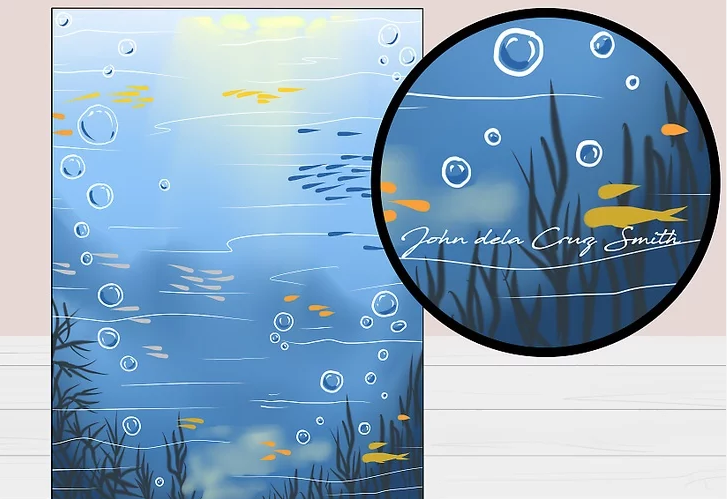
1. Sign with your full name or last name
Using your full name or at least your last name ensures that people can clearly identify you as the artist. Avoid relying on initials or monograms, as they may not be recognized by future collectors or viewers. Even if some people currently know your initials, your work could become untraceable over time without a proper signature.
Subheading: Choosing a Complete Signature
For more tips on why full names matter in art identification, see Art Identification Tips.

2. Use a signature that’s easy to read
A legible signature is key to ensuring that people can identify you as the creator of your painting. While some famous artists have cryptic signatures, they can do so because collectors are already familiar with their work. If your signature is hard to decipher, future owners may struggle to trace your identity.
Subheading: Practicing Legibility
Try practicing your signature on paper, then ask a few friends if they can read it. Adjust it until it is clear and readable. For practical advice on creating legible signatures, check How to Sign Your Artwork.

3. Use the same signature on all of your paintings
Consistency helps viewers and collectors recognize your work over time. If your signature changes frequently, it becomes difficult for others to link your paintings to you. If you’re not satisfied with your current signature, create a new one and use it consistently on all future works.
Subheading: Building Recognition Through Consistency
Consistent signatures build your brand as an artist. Learn more about developing a consistent artist signature at Artists Network.
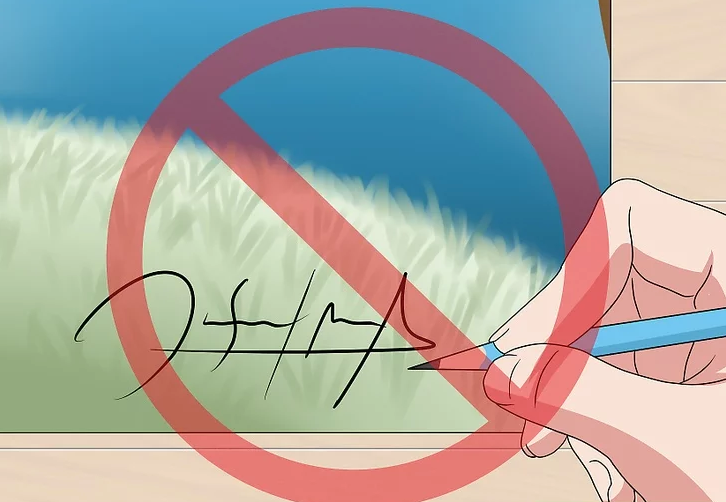
4. Avoid using an eye-catching signature
Your signature should complement your painting rather than dominate it. A bold, flashy signature can distract from the artwork itself. Instead, use a color that appears elsewhere in the painting to help your signature blend naturally while remaining visible.
Subheading: Integrating Your Signature Subtly
For tips on placing signatures without affecting the composition, see The Art of Signing Paintings.
Part2 Choosing a Spot to Sign

1. Sign in a bottom corner for a traditional signature
If you want a classic look, place your signature in one of the bottom corners of your painting. While both the left and right corners are acceptable, the right bottom corner is more commonly used. Position your signature about 1–2 inches (2.5–5.1 cm) from the edge so that framing won’t cover it.
Subheading: Traditional Placement Tips
Placing your signature in the bottom corner keeps it visible yet unobtrusive. For more guidance, see Art Signature Placement Tips.
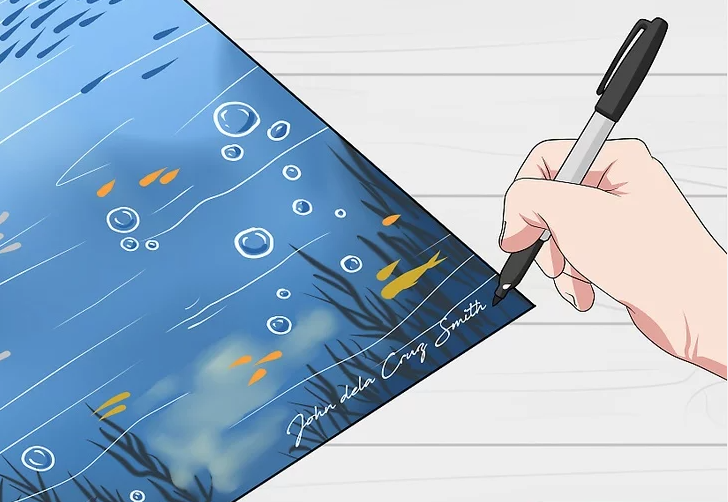
2. Sign inside the painting for a subtle signature
For a less obvious signature, you can integrate it into the painting itself. Consider placing it within an object or along a vertical element in your artwork. Keep the signature small and use a color that blends with the surrounding areas so it doesn’t draw attention.
Subheading: Subtle Integration Techniques
For example, if your painting shows a bowl of apples, you could place your signature inside one of the apples and use a matching shade of red to blend it in. Learn more about subtle signature techniques at EmptyEasel: Signing Artwork.
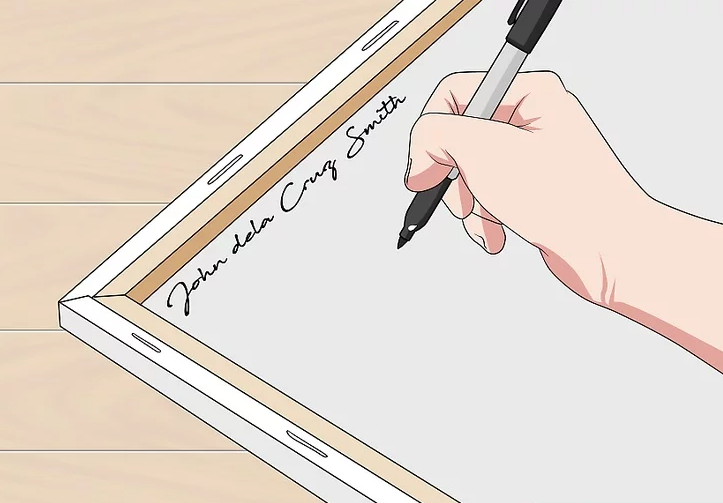
3. Put your full name on the back if your front signature isn’t complete
If your signature on the front is only your last name or initials, write your full name on the back of the painting. This ensures that future owners can identify you even if the front signature is abbreviated.
Subheading: Back-of-Painting Identification
Including your full name on the back adds an extra layer of authenticity. For details, check Artists Network: Signing Tips.
Part3.Adding your Signature
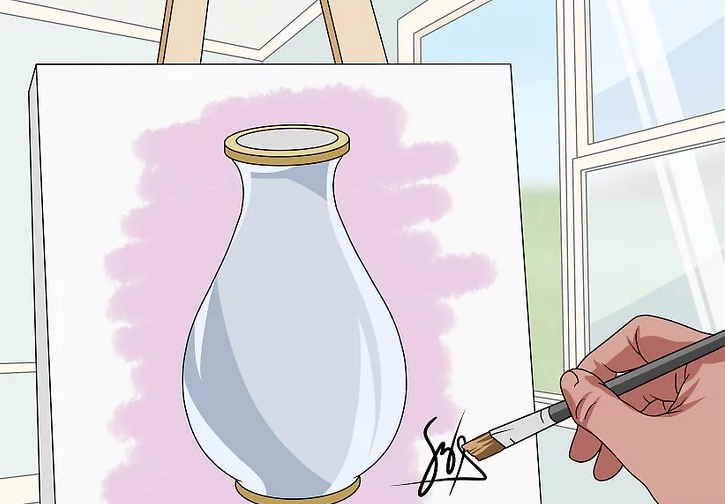
1. Sign your painting immediately after finishing it
Adding your signature right after completing the painting helps it blend naturally with the rest of your work. If you wait until the painting is fully dry, the signature can appear separate or as an afterthought. Collectors also prefer signatures added at the time of completion because they are more authentic and harder to forge.
Subheading: Why Timing Matters
For tips on signing freshly completed paintings, see Art Signature Timing Tips.
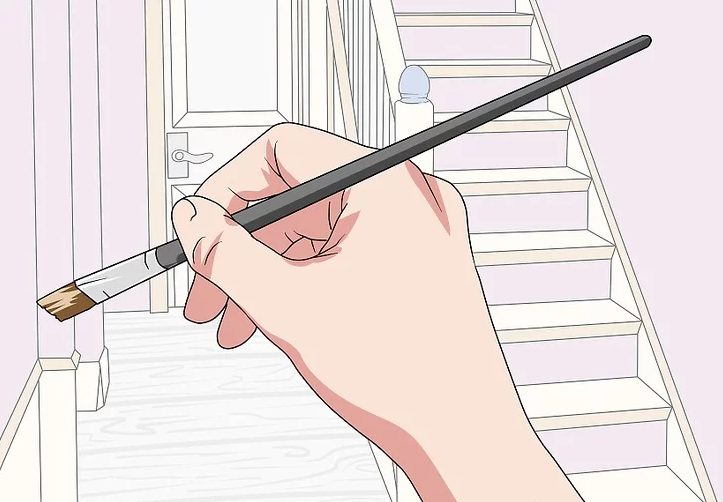
2. Use the same medium as your painting
Always sign with the same medium used to create your artwork. Using a different medium may clash with the painting and make your signature look out of place. For example, use watercolor if your painting is watercolor, or oil paints if your painting is done in oils.
Subheading: Matching Mediums for Harmony
Consistency in medium ensures the signature integrates seamlessly into the painting. Learn more about choosing the right medium at EmptyEasel: Signing Techniques.
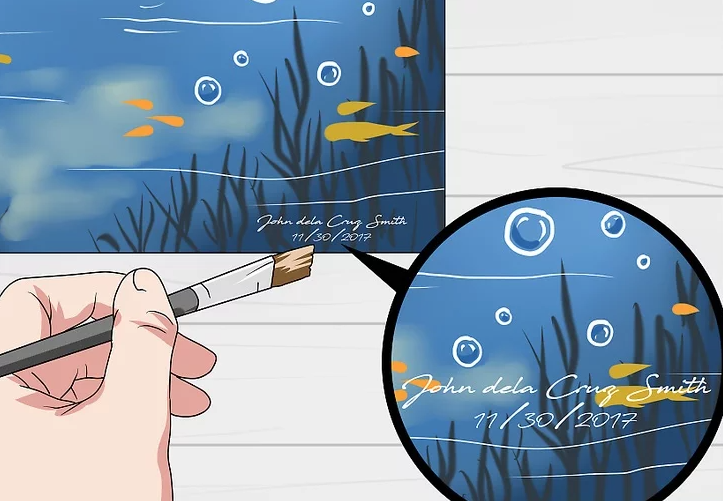
3. Include the year of creation with your signature
Adding the year helps you and future owners track when the painting was made. Place the year next to your name, or if you prefer not to display it on the front, write it on the back for reference. You can also abbreviate it—for example, write “17” instead of “2017.”
Subheading: Dating Your Artwork
Including the date adds historical context and increases authenticity. For more information on dating artwork, see Artists Network: Signing and Dating Art.